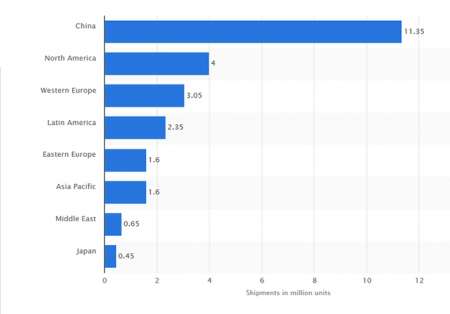MeriTalk recently connected with Bob Osborn, Chief Technology Officer, ServiceNow Federal, to discuss President Donald Trump’s Executive Order (EO) for a Comprehensive Plan for Reorganizing the Executive Branch and what’s ahead for agencies charged with implementing modernization initiatives.
MeriTalk: Recently, the first draft of the Agency Reform Plans were due in response to President Donald Trump’s Executive Branch Reorganization EO. What types of recommendations do you expect to see take center stage?
Bob Osborn: The initial plans will set the tone for reorganization efforts moving forward from the White House, Office of Personnel Management, and agencies. We expect to see a tempered initial response as agencies await developments with regard to whether mandates will ultimately be funded.

MeriTalk: The EO calls for agencies to better leverage technology to improve underlying business processes–including identifying opportunities to automate processes. What types of processes represent the greatest target for automation in today’s Federal government–even after years of modernization efforts?
BO: We have seen modernization as a theme of each new administration in recent history, but the barriers to modernization have been complex. Many manual processes remain, especially when it comes to processes that cut across multiple departments. Initiating a cross-cutting, agencywide approach to service delivery is necessary but challenging, especially when we look at holistic service delivery that marshals the data stored in legacy systems. For example, automating the onboarding of personnel spans human resources, financial, and IT infrastructures and processes– many of which remain disconnected. This function, which remains largely manual today, is one example of a prospect for modernization.
MeriTalk: What role can and should cloud play in helping to align the Federal workforce to meet today’s needs and those ahead?
BO: Cloud is critical as the foundation from which we provide modern, consumer-like services–including how we make decisions and run our lives. We’ve chosen a platform–phone or tablet–that runs applications presenting information on which we base decisions. We may utilize applications like Waze for driving directions, banking apps for online banking, or Uber for transportation services. With just a point, click, and drag you can do just about anything you like. This is the expectation of the workforce today.
To deliver at work (in this case, a Federal agency) the same type of modern user experience that we have in our “consumer” life, we need a multi-instance enterprise cloud that allows systems to pull information from multiple data sources. We don’t have that today in most Federal agencies. As a result, agencies are making decisions using stale data. We believe this is an archaic way to do business, especially as we modernize and treat government services as consumer services. A multi-instance enterprise cloud is central to achieving both a modern user experience and real-time, multistream data for better decision-making.
MeriTalk: How might we expect to see the role of managed services evolve under the EO?
BO: This is clearly the way to go. Tony Scott said on many occasions: Government needs to start acting like a multi-divisional enterprise with an overarching corporate structure with independent divisions performing different functions. Shared services is one aspect of this, and managed services is a maturity of shared services. This building-block approach involves capable and agile architecture and infrastructure and easy-to-use applications. It, ultimately, results in the hosting of services that leverage workflows and business processes to deliver the right information to the right person at the right time for appropriate decision-making. We see many organizations modernizing one department within their agency first. The applications developed through DevOps allow other departments to take advantage of them quickly–this can then be expanded across the entire agency. Core functions–like human resources and financial management–are ripe candidates for managed services. I believe the GSA unified shared services model is the right direction. It has already set the framework. The challenge is that you need a common platform for these services to be delivered through.
MeriTalk: How is ServiceNow positioned to help agencies in executing on the requirements of the Reorganization EO?
BO: We have taken the necessary steps through investment in our enterprise-class cloud and gone through FedRAMP certification process, so when the time comes agencies are confident putting their information into the ServiceNow cloud. We have more than 100 customers utilizing this modern consumer experience platform delivery model. The ability to do service delivery easily and rapidly in a platform that is mobile-device aware is new. The proper visualization is there regardless of the device–collaboration and chat, analytics, governance, risk, and compliance, and portfolio risk management are all integrated right out of the box. This reduces costs and cybersecurity risk, enabling agencies to effectively move out on the EO with confidence.
MeriTalk: What best practices are you sharing with agencies as they begin this journey?
BO: I encourage everyone to do their homework. Not all clouds are created equal, and not everyone who claims to have an enterprise-class cloud and enterprise service delivery really do. The ITIL model is critical because it provides a proven solution. Agencies must not be reluctant to start small and grow. With ServiceNow, you can start in one business area or department, and since everything is native on the platform, you can grow. This is not unlike a communications service provider, like Comcast or Dish. A basic channel package exists, and then you subscribe to additional channels you want. If you want more, you simply turn them on because they’re resident on the box.
ServiceNow is subscription based, so this same model applies. Feds can start in any one area, and then everything is certified in their environment. In the future, all they need to do is subscribe to other services. The certification process is minimal compared to other acquisitions–we’re transforming IT acquisitions. Today, CIOs struggle with keeping up with new technologies. This platform approach provides constant upgrades and new technology. New functionality and new apps are always added and subscriptions are always modernized. Because we use a single data model with common application logic–they are backward compatible. Instead of upgrades being a big issue, they become non-events. Agencies can keep up with modern technology and lower cybersecurity risk all at a lower cost.




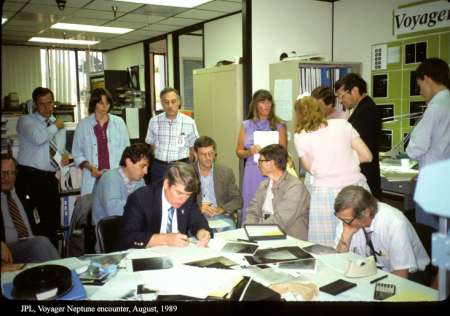 Nowhere is this example more apparent than at NASA. Take, for example, NASA’s Voyager 2 program. NASA scientists and engineers have been working on Voyager 2 for 40 years. It’s the only spacecraft to have ever visited Uranus and Neptune, and is currently making its way to interstellar space. The technical achievements recorded during missions to photograph Uranus, Neptune, and Neptune’s moons are without parallel and were done by career NASA employees.
Nowhere is this example more apparent than at NASA. Take, for example, NASA’s Voyager 2 program. NASA scientists and engineers have been working on Voyager 2 for 40 years. It’s the only spacecraft to have ever visited Uranus and Neptune, and is currently making its way to interstellar space. The technical achievements recorded during missions to photograph Uranus, Neptune, and Neptune’s moons are without parallel and were done by career NASA employees.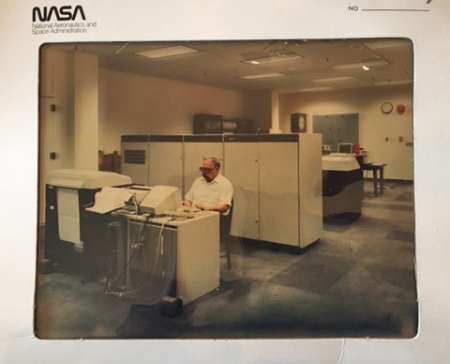
 MeriTalk compiles a weekly roundup of contracts and other industry activity. Stay up to date on everything that’s happening in the Federal Information Technology community. MeriTalk.com keeps you informed about the topics that mean the most to you and creates a targeted platform for cooperation, public-private dialogue, highlighting innovation, and sharing informed opinions. This week: News from
MeriTalk compiles a weekly roundup of contracts and other industry activity. Stay up to date on everything that’s happening in the Federal Information Technology community. MeriTalk.com keeps you informed about the topics that mean the most to you and creates a targeted platform for cooperation, public-private dialogue, highlighting innovation, and sharing informed opinions. This week: News from  As the State Department works to gain international support for its cybersecurity framework, experts said that global norms and deterrence won’t be enough to convince state actors not to influence elections through cyber means
As the State Department works to gain international support for its cybersecurity framework, experts said that global norms and deterrence won’t be enough to convince state actors not to influence elections through cyber means  The Office of Management and Budget unveiled its plan to reorganize Federal agencies, called the “Comprehensive Plan for Reforming the Federal Government and Reducing the Federal Civilian Workforce,” which responds to President Trump’s March 13 executive order to OMB. The plan requires agencies to take immediate action on reducing their workforce and saving money, and submit a long term plan for maximizing worker performance by the end of June. Agencies will also be required to submit an Agency Reform Plan within 180 days to modernize
The Office of Management and Budget unveiled its plan to reorganize Federal agencies, called the “Comprehensive Plan for Reforming the Federal Government and Reducing the Federal Civilian Workforce,” which responds to President Trump’s March 13 executive order to OMB. The plan requires agencies to take immediate action on reducing their workforce and saving money, and submit a long term plan for maximizing worker performance by the end of June. Agencies will also be required to submit an Agency Reform Plan within 180 days to modernize 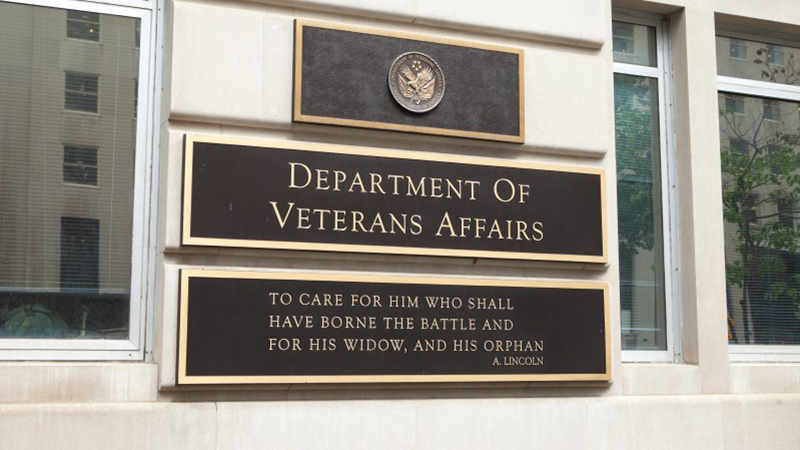 John Short, the program executive for the VistA Evolution program at the Department of Veterans Affairs, has been tapped to take over as the acting deputy director of the DOD/VA Interagency Program Office responsible for ensuring electronic health record sharing between the VA
John Short, the program executive for the VistA Evolution program at the Department of Veterans Affairs, has been tapped to take over as the acting deputy director of the DOD/VA Interagency Program Office responsible for ensuring electronic health record sharing between the VA  The National Geospatial-Intelligence Agency needs to attract new tech talent with new ideas and a desire to work on something bigger and more important than the next popular dating app. One of the ways the agency hopes to do that is by continuing to work with the government’s own in-house
The National Geospatial-Intelligence Agency needs to attract new tech talent with new ideas and a desire to work on something bigger and more important than the next popular dating app. One of the ways the agency hopes to do that is by continuing to work with the government’s own in-house  The government needs to create and fund new hiring programs to fill Federal cyber vacancies, according to experts testifying before the House IT Subcommittee on Tuesday. During the hearing, IT subcommittee chairman Will Hurd, R-Texas, floated the idea of creating a Cyber National Guard that would pull workers from the private sector for short stints of work
The government needs to create and fund new hiring programs to fill Federal cyber vacancies, according to experts testifying before the House IT Subcommittee on Tuesday. During the hearing, IT subcommittee chairman Will Hurd, R-Texas, floated the idea of creating a Cyber National Guard that would pull workers from the private sector for short stints of work  President Donald Trump ran his campaign on the promise of a wall that would run the length of the U.S.-Mexico border. While Secretary of Homeland Security John Kelly still does not know what the wall will look like, he said it will probably not resemble the single concrete partition
President Donald Trump ran his campaign on the promise of a wall that would run the length of the U.S.-Mexico border. While Secretary of Homeland Security John Kelly still does not know what the wall will look like, he said it will probably not resemble the single concrete partition 
 Agencies at the state and local level need to adopt cybersecurity practices that cater to their individual needs, according to many of the experts who testified at a Senate hearing. Patricia Hoffman, acting assistant secretary of DOE’s Office of Electricity Delivery and Energy Reliability, stated that the agency does not have a single model for cybersecurity regulations, but rather recommends certain components that could contribute to a
Agencies at the state and local level need to adopt cybersecurity practices that cater to their individual needs, according to many of the experts who testified at a Senate hearing. Patricia Hoffman, acting assistant secretary of DOE’s Office of Electricity Delivery and Energy Reliability, stated that the agency does not have a single model for cybersecurity regulations, but rather recommends certain components that could contribute to a  More than two years after Congress passed the Federal Information Technology Acquisition Reform Act—the biggest overhaul of Federal IT acquisition in decades—most Federal chief information officers say they still don’t have the authority necessary to manage technology
More than two years after Congress passed the Federal Information Technology Acquisition Reform Act—the biggest overhaul of Federal IT acquisition in decades—most Federal chief information officers say they still don’t have the authority necessary to manage technology  The IT team at the Federal Communications Commission has been working to re-prioritize its projects to align with the goals of the agency’s new leadership, which has forced officials to make tough decisions about modernization. David Bray, the chief information officer at the FCC, and his team presented the projects that they are working on to Chairman Ajit Pai earlier this month to get his opinion on where the team should focus its efforts. Pai wants the IT team to focus on the development and back-end technology for the FCC’s actions including Mobility Fund Phase II and Connect America Fund Phase II, which serve to bring broadband
The IT team at the Federal Communications Commission has been working to re-prioritize its projects to align with the goals of the agency’s new leadership, which has forced officials to make tough decisions about modernization. David Bray, the chief information officer at the FCC, and his team presented the projects that they are working on to Chairman Ajit Pai earlier this month to get his opinion on where the team should focus its efforts. Pai wants the IT team to focus on the development and back-end technology for the FCC’s actions including Mobility Fund Phase II and Connect America Fund Phase II, which serve to bring broadband  After the huge success of the Hack the Pentagon bug bounty program, members of the Department of Defense and participating organizations are calling on other government agencies to copy the DoD program
After the huge success of the Hack the Pentagon bug bounty program, members of the Department of Defense and participating organizations are calling on other government agencies to copy the DoD program 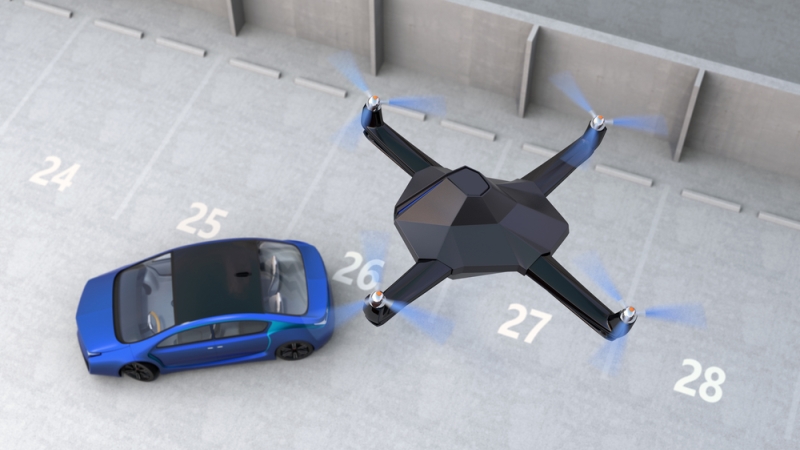 The Department of Transportation is holding off on creating new rules for automated vehicles and unmanned aerial systems because of President Donald Trump’s limit on new regulations, according to DOT officials. DOT has worked on a proposed rulemaking that would require cars to include vehicle to vehicle (V2V) communications, which would allow cars to talk to one another
The Department of Transportation is holding off on creating new rules for automated vehicles and unmanned aerial systems because of President Donald Trump’s limit on new regulations, according to DOT officials. DOT has worked on a proposed rulemaking that would require cars to include vehicle to vehicle (V2V) communications, which would allow cars to talk to one another 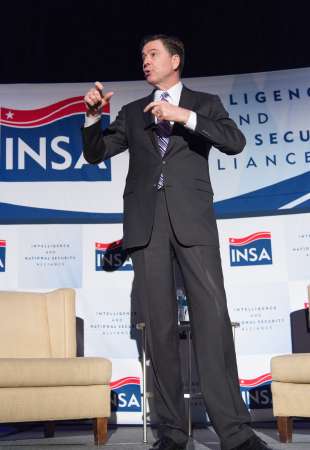
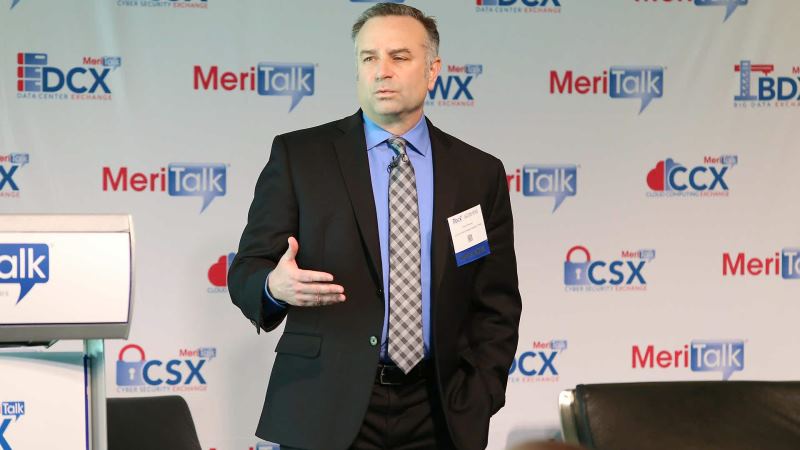 The deadline for Federal agencies to close all of their data centers by 2018 will probably be extended for an unspecified amount of time, according to Dave Powner, director of IT issues at the Government Accountability Office. The Federal Information Technology Acquisition Reform Act requires agencies to close their data centers by 2018. The most recent FITARA scorecard, released Dec. 6, indicates that the consolidation process is moving slowly. Twelve of the 24 graded agencies received a C or worse in the
The deadline for Federal agencies to close all of their data centers by 2018 will probably be extended for an unspecified amount of time, according to Dave Powner, director of IT issues at the Government Accountability Office. The Federal Information Technology Acquisition Reform Act requires agencies to close their data centers by 2018. The most recent FITARA scorecard, released Dec. 6, indicates that the consolidation process is moving slowly. Twelve of the 24 graded agencies received a C or worse in the  Big Blue is on a roll. The company on Monday announced a new data center in China, upping its cloud footprint to 51 data centers in 20 countries and signaling a continued enterprisewide push to make cloud computing a central component of its
Big Blue is on a roll. The company on Monday announced a new data center in China, upping its cloud footprint to 51 data centers in 20 countries and signaling a continued enterprisewide push to make cloud computing a central component of its  The FBI has been using facial recognition technology since 2010. Its Next Generation Identification-Interstate Photo System contains millions of photos of Americans, which FBI officers use during criminal investigations. The Government Accountability Office found that the database, which cost $1.2 billion to create, correctly returns matches 86 percent of the time. The National Institute of Standards and Technology requires facial recognition returns to be correct 85 percent
The FBI has been using facial recognition technology since 2010. Its Next Generation Identification-Interstate Photo System contains millions of photos of Americans, which FBI officers use during criminal investigations. The Government Accountability Office found that the database, which cost $1.2 billion to create, correctly returns matches 86 percent of the time. The National Institute of Standards and Technology requires facial recognition returns to be correct 85 percent  Federal agencies are hemorrhaging billions of dollars every year due to fraud, waste, and improper payments, according to the Government Accountability Office. And the problem may be getting worse, with the governmentwide improper payment rate reaching $144 billion in fiscal year 2016. To put those percentages in perspective, GAO found that $44 billion of Federal improper payments in FY 2016 were caused by insufficient documentation. Another $34 billion were the result of the inability to authenticate eligibility, meaning an improper payment was made because agencies lacked databases or other resources to help determine
Federal agencies are hemorrhaging billions of dollars every year due to fraud, waste, and improper payments, according to the Government Accountability Office. And the problem may be getting worse, with the governmentwide improper payment rate reaching $144 billion in fiscal year 2016. To put those percentages in perspective, GAO found that $44 billion of Federal improper payments in FY 2016 were caused by insufficient documentation. Another $34 billion were the result of the inability to authenticate eligibility, meaning an improper payment was made because agencies lacked databases or other resources to help determine 
 The proposed budget cuts civilian agency spending by 5 percent and would lead to a drastic reduction in the size of the Federal workforce. But a more telling aspect of the budget blueprint is its focus on accountability and performance. Federal IT programs (and all other programs, for that matter) will need to demonstrate measurable return on their investments if they want the Trump administration to
The proposed budget cuts civilian agency spending by 5 percent and would lead to a drastic reduction in the size of the Federal workforce. But a more telling aspect of the budget blueprint is its focus on accountability and performance. Federal IT programs (and all other programs, for that matter) will need to demonstrate measurable return on their investments if they want the Trump administration to  The Department of Justice released an indictment of four men involved in the 2016 hack of Yahoo email accounts, two of whom were acting in their capacity as Russian intelligence and security officers. “The defendants include two officers of the Russian Federal Security Service, an intelligence and law enforcement agency of the Russian Federation, and two criminal hackers with whom they conspired to accomplish these intrusions,” said U.S. acting assistant attorney
The Department of Justice released an indictment of four men involved in the 2016 hack of Yahoo email accounts, two of whom were acting in their capacity as Russian intelligence and security officers. “The defendants include two officers of the Russian Federal Security Service, an intelligence and law enforcement agency of the Russian Federation, and two criminal hackers with whom they conspired to accomplish these intrusions,” said U.S. acting assistant attorney  President Donald Trump picked a National Security Agency official to lead White House cybersecurity policy issues during a time when NSA surveillance powers are up for discussion and bad blood exists between the NSA and industry. Rob Joyce began serving as the chief of the National Security Agency’s Tailored Access Operations organization in April 2013 and will work for the Trump administration on managing cybersecurity efforts, according
President Donald Trump picked a National Security Agency official to lead White House cybersecurity policy issues during a time when NSA surveillance powers are up for discussion and bad blood exists between the NSA and industry. Rob Joyce began serving as the chief of the National Security Agency’s Tailored Access Operations organization in April 2013 and will work for the Trump administration on managing cybersecurity efforts, according 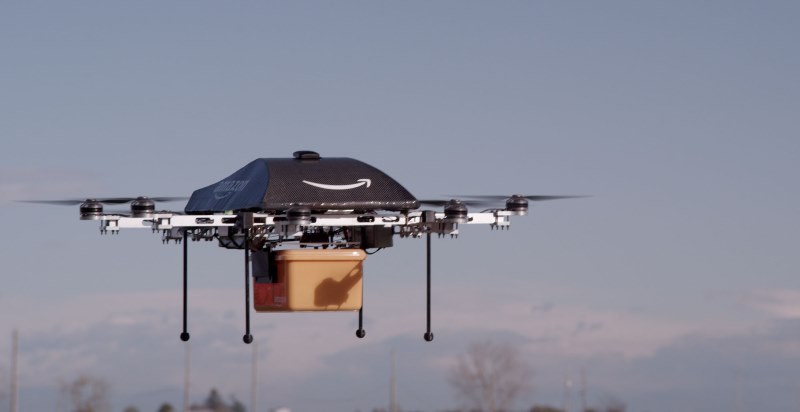 The Federal Aviation Administration has not established any rules for commercial companies that collect and retain personal information, according to Earl Lawrence, director of the FAA’s Office of Unmanned Aircraft Systems. Several commercial companies have added unmanned aircraft systems, or drones, to their delivery fleets. These devices, furnished with cameras, have the ability to photograph people and their possessions. For example, a drone could photograph the license plates of cars at a health clinic and sell the information
The Federal Aviation Administration has not established any rules for commercial companies that collect and retain personal information, according to Earl Lawrence, director of the FAA’s Office of Unmanned Aircraft Systems. Several commercial companies have added unmanned aircraft systems, or drones, to their delivery fleets. These devices, furnished with cameras, have the ability to photograph people and their possessions. For example, a drone could photograph the license plates of cars at a health clinic and sell the information 
 A cybersecurity firm found critical vulnerabilities in a messaging application used by White House staffers, which could have allowed malicious hackers access to their conversations. IOActive began conducting its investigation into Confide’s vulnerabilities in February and found that hackers could impersonate another user by hijacking an account session or guessing passwords, learn the contact information of all or specific Confide users, become an intermediary in a conversation and decrypt messages, and alter the contents of
A cybersecurity firm found critical vulnerabilities in a messaging application used by White House staffers, which could have allowed malicious hackers access to their conversations. IOActive began conducting its investigation into Confide’s vulnerabilities in February and found that hackers could impersonate another user by hijacking an account session or guessing passwords, learn the contact information of all or specific Confide users, become an intermediary in a conversation and decrypt messages, and alter the contents of  Ninety-two percent of the most popular Federal websites fail to meet standards in either security, speed, mobile friendliness, or accessibility, according to a study released Wednesday by the
Ninety-two percent of the most popular Federal websites fail to meet standards in either security, speed, mobile friendliness, or accessibility, according to a study released Wednesday by the  According to the leaked documents, the CIA has the ability to hack iPhones, Android devices, smart vehicles, and Samsung smart televisions. The agency’s method of hacking smart TVs was developed in tandem with the United Kingdom’s MI5. Labeled “Weeping Angel,” this type of hack can turn on a smart television’s audio system and record someone’s conversation while he or she thinks the machine is off. “Weeping Angel” also suppresses the device’s LED lights to improve the look of the
According to the leaked documents, the CIA has the ability to hack iPhones, Android devices, smart vehicles, and Samsung smart televisions. The agency’s method of hacking smart TVs was developed in tandem with the United Kingdom’s MI5. Labeled “Weeping Angel,” this type of hack can turn on a smart television’s audio system and record someone’s conversation while he or she thinks the machine is off. “Weeping Angel” also suppresses the device’s LED lights to improve the look of the  Major innovations in blockchain for health data are likely to happen this year with the help of Federal agencies, industry experts say, even though applications for the technology have yet to reach mass markets. A blockchain is a data structure that can be time-stamped and signed using a private key to prevent tampering. It was most popularly used to create the digital currency Bitcoin but is increasingly expanding
Major innovations in blockchain for health data are likely to happen this year with the help of Federal agencies, industry experts say, even though applications for the technology have yet to reach mass markets. A blockchain is a data structure that can be time-stamped and signed using a private key to prevent tampering. It was most popularly used to create the digital currency Bitcoin but is increasingly expanding 